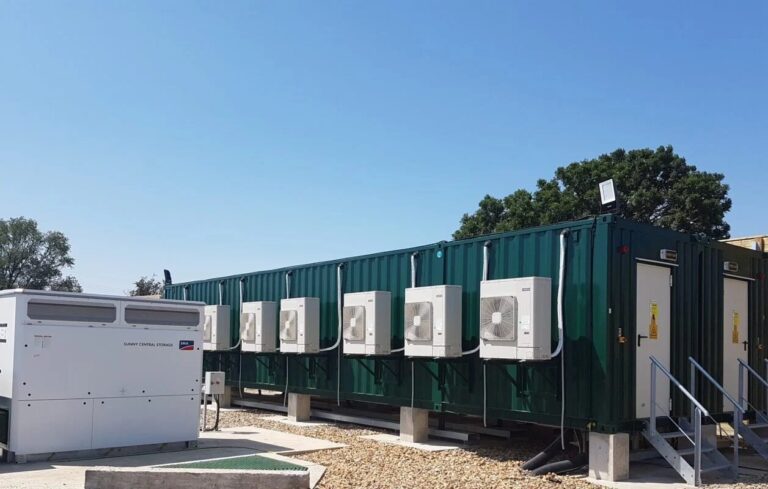Gresham House Energy Storage Fund (GRID) expects full-year operating portfolio turnover of around £42m as December saw improved battery shipment rates in the balancing mechanism (BM).
The Battery Energy Storage Systems Investment Fund (BESS) said that for the financial year ending December 31, 2024, operating portfolio earnings before interest, tax, depreciation and amortization (EBITDA) are approximately £29 million. This is an increase from £25.8 million at the end of 2023.
Over the past year, GRID projects that have come online include the 50 MW Elland BESS, which will be powered on November 1 with a duration of 2 hours. The site has now been commissioned, although the commissioning of the 100 MW Melksham BESS had to be rescheduled due to weather conditions in Great Britain. Still, GRID said the site is fully ready to energize and the team is working to shorten the commissioning phase once energization takes place, which is expected later this month.
It is also a rolling extension of the Melksham BESS, which would take it from 1 hour to its target duration of 2 hours. In Scotland, where a compliance process is required before switching on, GRID’s Shilton Lane project is expected to complete the compliance phase in February 2025.
A recovery in the wholesale market also fueled growth, with December being the strongest month of 2024 for battery shipments in the BM. Net sales in July and August were 25% higher than the average net sales in the first half of 2024, and with the ratification of the above projects, the prospects for GRID have improved significantly.
By comparison, in the half-year results published at the end of September, revenues from GRID’s operating portfolio fell 12.8% year-on-year, from £20.5 million in June 2023 to £17.9 million in June 2024.
Improvements in the NESO control room increase BESS shipment
The National Energy System Operator (NESO) delivered on commitments it made in late 2024 to improve the methodology used in its control room, increasing battery shipments from 10% in September to 14% in November.
Other steps NESO has taken include the launch of Quick Reservea new frequency balancing service that became operational on December 3 and led to an improvement in BESS usage and better trading revenues.
In the second quarter of 2025, NESO is expected to enable the control room to see the state of charge of a battery. When the control room can see the state of charge of a BESS, it can be transmitted at a lower power level for 89 minutes or at full power for shorter periods, eliminating the need for the ’30-minute rule’.
The 30-minute rule was implemented in March this year to change the way BESS communicates energy availability in the BM. The change, from a ’15-minute rule’, is intended to allow batteries to be shipped for longer.
NESO also published a report commissioned by LCP Delta that includes an analysis of historical transhipment rates and a revised transshipment rate methodology used since December 16 to provide daily transshipment rate data.
Ben Guest, fund manager of Gresham House Energy Storage Fund and managing director of Gresham House New Energy, said: “We have worked hard to highlight the issues facing the sector; we are relieved to see that NESO is accepting these issues and appreciate the significant efforts of the NESO team to address them. There is still a lot of work to be done and we look forward to further progress.”
He added that the company’s three-year plan includes project expansions, a new pipeline and access to the new revenue streams that will become available as the industry matures.
With the government’s Clean Power 2030 Action Plan committing to an online battery capacity of 29-35 GW by 2030, significant growth in the sector is needed. It has committed to reforms and investment that will allow the technology to develop at scale in Britain.
GRID Chairman John Leggate CBE said: “In addition to NESO’s support for BESS, it is encouraging to see the Government endorsing a level playing field for battery storage – the only proven, commercially viable technology that can dynamically deliver renewable intermittent energy on a national scale to manage.”


